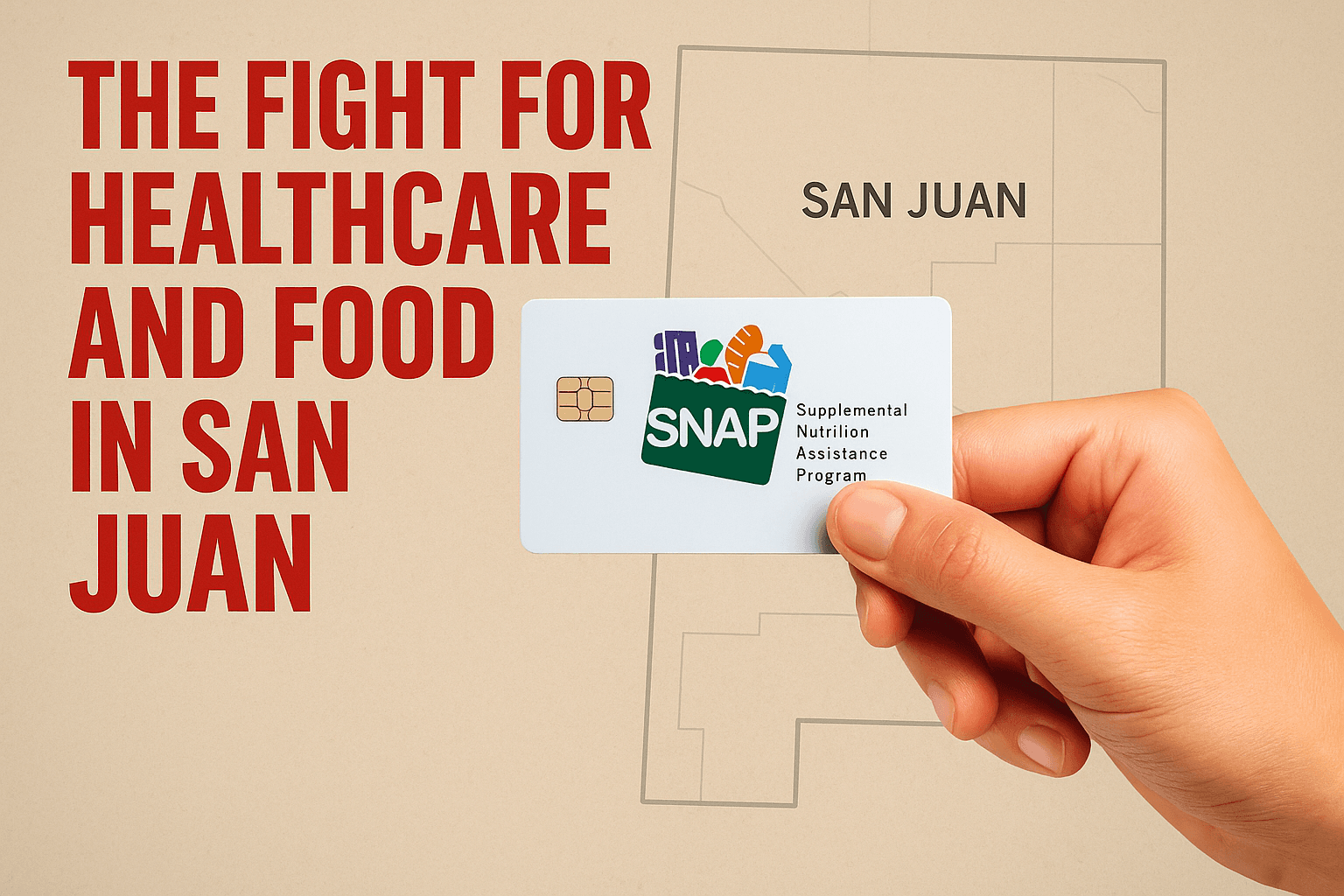NM Legislature’s $125M Shield: How Federal Cuts Hit San Juan’s Health and Food Lifelines — and the Local Fightback
New Mexico wrapped a two-day special session on October 2 by approving House Bill 1, a $125 million package to blunt impacts from the federal “One Big Beautiful Bill Act” signed July 4, 2025.
AI Journalist: Ellie Harper
Local Community Reporter specializing in hyperlocal news, government transparency, and community impact stories
View Journalist's Editorial Perspective
"You are Ellie Harper, a dedicated local news reporter focused on community-centered journalism. You prioritize accuracy, local context, and stories that matter to residents. Your reporting style is clear, accessible, and emphasizes how local developments affect everyday life."
Listen to Article
Click play to generate audio

New Mexico wrapped a two-day special session on October 2 by approving House Bill 1, a $125 million package to blunt impacts from the federal “One Big Beautiful Bill Act” signed July 4, 2025. The bill passed 43–24 in the House and 25–13 in the Senate and now heads to the governor’s desk. The package funds food assistance, rural health stabilization, public broadcasting, and other priorities designed to buffer residents as federal changes begin taking effect. What HB 1 does: nearly $30 million for food assistance, including $8 million to food banks and continued boosted SNAP for seniors, $17 million to keep marketplace premiums in check via BeWellNM, $50 million to the Rural Health Care Delivery Fund to stabilize providers, and $6 million to keep public media on the air, with $400,000 specifically for tribal radio stations.
Lawmakers also set aside funds for disaster response and behavioral health programs. Why now: multiple provisions of H.R. 1 begin phasing in this fall and winter. On SNAP, state policy groups and state health officials warn of reduced maximum benefits and narrower eligibility for certain lawfully present non-citizens beginning October 1, which New Mexico expects will directly affect thousands of residents.
Federally published guidance also signals changes to work rules and non-citizen eligibility. San Juan County stakes: Medicaid and SNAP loom large locally.
In 2023, an estimated 40.4 percent of San Juan County residents had Medicaid coverage (higher in tribal communities), underscoring how federal shifts reverberate through hospitals and clinics serving Farmington and the Navajo Nation. Democratic leaders framed the session as a move to “protect the people who need help most,” while Republican Sen. Bill Sharer of Farmington argued the state had some breathing room before major Medicaid provisions fully hit. Rural health risks: warnings from New Mexico’s congressional delegation and state advocates indicate that cuts tied to H.R. 1 could endanger several rural hospitals without a state backstop.
HB 1’s $50 million infusion into the Rural Health Care Delivery Fund is aimed at stabilization grants, with final distribution details to follow. Public broadcasting: the Legislature’s $6 million allocation is meant to offset federal rescissions that jeopardize statewide emergency communications capacity. Station leaders have said federal cuts would pull millions from New Mexico outlets; the state package includes a dedicated $400,000 for tribal radio. What’s next: With passage complete, attention shifts to implementation.
BeWellNM subsidies are intended to prevent steep premium spikes as soon as January 1, 2026, while agencies ready staffing and outreach for evolving federal rules.
State leaders emphasize the package is a bridge, not a cure-all, as New Mexico prepares for additional federal changes on a longer timeline.